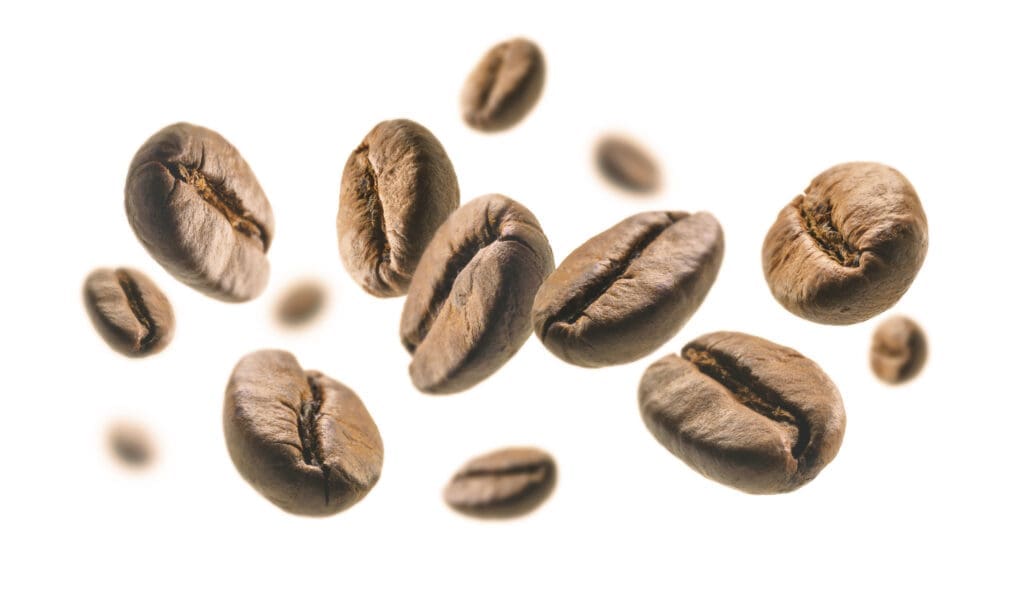
Coffea curda
Latin name: Coffea curda
Short name: Coff
Common name: Raw Coffee | Green Coffee | Unroasted Coffee Beans
Primary miasm: Sycotic Secondary miasm(s): Psoric, Syphilitic
Kingdom: Plants
Family: Rubiaceae
- Symptomatology
- Remedy Information
- Differentiation & Application
Coffea cruda is prepared from the unroasted seeds of the Coffea arabica plant, a member of the Rubiaceae family. In its crude form, the bean contains significant quantities of caffeine, chlorogenic acid, tannins, trigonelline, and volatile oils. The preparation in homeopathy uses the unroasted seed to retain its full alkaloid profile, especially caffeine, which has a direct stimulant effect on the central nervous system, increasing cortical activity, elevating mood, and intensifying sensory perception.
Coffea cruda is prepared from the unroasted seeds of the Coffea arabica plant, a member of the Rubiaceae family. In its crude form, the bean contains significant quantities of caffeine, chlorogenic acid, tannins, trigonelline, and volatile oils. The preparation in homeopathy uses the unroasted seed to retain its full alkaloid profile, especially caffeine, which has a direct stimulant effect on the central nervous system, increasing cortical activity, elevating mood, and intensifying sensory perception.
First proved by Samuel Hahnemann and his pupils, published in Materia Medica Pura (1827). Subsequent confirmations and expansions by Allen, Hering, Kent, and others.
- Nervous system – cerebral cortex, heightened nerve excitability, sensory over-acute states.
- Mind and emotions – over-sensitiveness to impressions, exalted mental activity, emotional reactivity.
- Special senses – hearing, sight, touch, taste and smell all over-acute.
- Sleep mechanism – insomnia from mental overactivity, pleasurable excitement, or pain.
- Heart and circulation – palpitations from emotions or stimulants.
- Gastrointestinal tract – effects of coffee on digestion, especially aggravations in sensitive individuals.
- Reproductive system – menstrual pains aggravated by heightened nerve perception.
- Lying quietly in a dark, quiet room, shutting out external stimuli.
- Warmth, especially warm coverings and a warm bed when restless from chill.
- Gentle pressure over painful parts when hypersensitivity is extreme [Hering].
- For some, slow rhythmic motion or gentle massage when over-excited.
- Small sips of cool water for nausea brought on by nervous excitement.
- Distraction from the pain or emotional upset by engaging in absorbing mental activity.
- Excessive emotions — joy, grief, anger, disappointment, or pleasurable excitement [Kent].
- Sudden noise, bright light, strong odours, touch, or any sensory overload.
- Coffee itself in the crude form when taken habitually in large doses.
- Sudden temperature changes or exposure to cold air when overheated.
- Pain, even slight, becomes intolerable due to heightened sensitivity.
- Mental exertion at night, exciting conversations, or reading stimulating books before bed.
- Overeating or eating late in the evening; rich or indigestible food.
- Chamomilla: Oversensitiveness to pain, but more irritable and capricious; Coffea is more exalted and joyous.
- Aconitum napellus: Acute anxiety and restlessness, but from fear rather than pleasurable excitement.
- Nux vomica: Sleeplessness from mental strain or stimulants, but more irritable and fault-finding.
- Opium: Sleeplessness from pleasurable excitement, but more with drowsiness and inactivity of mind.
- Coffea tosta: Similar symptoms but generally less intense sensory over-acute states.
- Complementary: Acon., Nux-v., Cham.
- Antidotes: Nux-v., Cham., Ign., Puls.
- Inimical: None noted.
- Follows Well: Acon., Cham., Bell.
- Precedes Well: Nux-v., Puls., Sep.
Coffea cruda embodies the polarity of stimulation and exhaustion — the exaltation of mind and sense followed by collapse. At its heart lies a profound nervous hyperaesthesia: the world’s beauty, sounds, lights, and even joys are too much to bear. The Coffea patient lives at the threshold of sensory ecstasy, a state both blissful and tormenting. This intensity, whether of pleasure or pain, defines the remedy’s essence.
Particularly effective in insomnia of sensitive, excitable persons; in neuralgias where pain is out of proportion to pathology; and in oversensitiveness to pain during pregnancy or labour.
Mind
- Mind; activity of mind, increased
- Mind; joy, excessive
- Mind; sensitivity, external impressions to
- Mind; sleeplessness from mental activity
Head
- Head; pain, as from a nail driven in
- Head; pain, excited by emotions
Sleep
- Sleep; sleeplessness from joy
- Sleep; sleeplessness from mental activity
- Hahnemann S. Materia Medica Pura – Original proving symptoms of Coffea.
- Hering C. The Guiding Symptoms of Our Materia Medica – Expanded clinical confirmations.
- Lippe A. Keynotes and Red Line Symptoms – Characteristic pains and oversensitiveness.
- Allen T.F. Encyclopedia of Pure Materia Medica – Detailed proving records.
- Hughes R. Cyclopaedia of Drug Pathogenesy – Pharmacological and proving synthesis.
- Kent J.T. Lectures on Materia Medica – Mental portrait and insomnia indications.
- Clarke J.H. Dictionary of Practical Materia Medica – Clinical notes and comparisons.
- Boericke W. Pocket Manual of Homoeopathic Materia Medica – Concise indications.
- Farrington E.A. Clinical Materia Medica – Remedy in relation to pathology.
- Nash E.B. Leaders in Homoeopathic Therapeutics – Practical clinical uses.
